Germania Inferior (5)
Q152136Germania inferior: small province of the Roman empire, situated along the Lower Rhine. Its capital was Cologne.
The limes
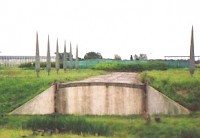
Since the Claudian army reforms, the grand strategy of the Roman empire was, on the whole, defensive. The Sahara, Euphrates, Danube, and Rhine were natural frontiers, and it was exceptional when the Romans launched new campaigns of conquest. This meant that the defensive line along the Rhine (limes), which had been created by Corbulo and his successors, remained intact. In the first quarter of the second century, it was even improved.
The first stage of the building of the limes in Germania Inferior can dendrochronologically be dated to the first years of the reign of the emperor Trajan: the trees were felled in 99/100. Several forts were rebuilt (e.g., Dormagen and Leiden-Roomburg), and a dike was constructed along the Rhine; there was a road on top of it. The quality of the fortification - if we may call a dike a fortification - enabled the Romans to withdraw troops. The Tenth Legion Gemina left Nijmegen. Perhaps Trajan's visit to Germania Inferior can also be connected with the building of the temple at Elst, which may have been dedicated to the military god Hercules Magusanus.
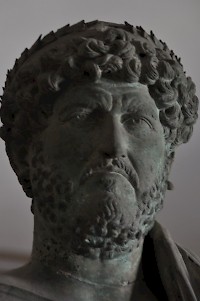
Probably, the system did not function properly, and therefore, Trajan's successor Hadrian ordered a full-scale reconstruction when he visited the country. Construction started in 121, but the wood was cut in 124/125. The dike on the southern bank of the Rhine, protected by timber revetments, was enlarged and was now 4½ meters wide. Much wood was needed: for every meter, about ½ m³ was used. On top of it was a road, the surface made of shells and grit. It is possible that the Ninth Legion Hispana offered the necessary manpower, as at least one subunit stayed at Nijmegen. Several forts were rebuilt and the canal of Corbulo was dredged.
After the emperor had ordered the construction of the limes in the Dutch river area, he went to Britain, where another, more famous limes was constructed: Hadrian's wall.
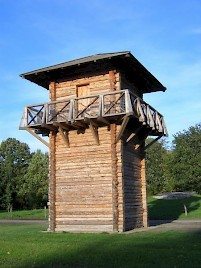
The Dutch limes was less impressive than the English wall of natural stone, but even a low dike must have been a clear border. No Roman could doubt where civilization ended and barbarism began.
During his stay in Germania Inferior, Hadrian seems to have allowed the recruitment officers to enlist young men from the native population. From this moment on, the number of local levies started to increase and there were fewer soldiers from Italy or elsewhere in the Rhine army. For example, a Batavian could serve in an auxiliary unit that was called "the African cohort". The same happened in Britain and along the Danube, where several units were stationed that were called "Batavian" but in fact consisted of local people.
The towns
In his Guide to Greece, the second-century author Pausanias offers a brief list of characteristics of a city in the Roman empire: besides houses, there had to be state buildings, a training-ground, a theater, a market-square, and running water. The presence of temples was self-evident. All these buildings were also present in the Low Countries and have been excavated by archaeologists.
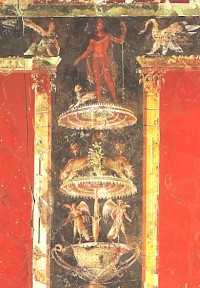
The ideal Roman city was laid out like a gridiron, in which the blocks of houses correspond to the fields. Even a small town like Forum Hadriani (modern Voorburg), which had only some 1,000 inhabitants, was built according to this plan. In the center of the town was the crossing of the two main roads and the market-square or Forum. Visitors knew that on this square, they could find the most important temple of the city and the town hall. If a settlement was very large, there would be other markets with specialized functions. But in the small towns of Germania Inferior, the weekly market was on the central square.
A forum has been excavated at Bavay, the capital of the Nervians in Gallia Belgica. Next to the square is a large hall or basilica: a multi-functional building, where merchants could meet, the governor heard cases, and the council of the town gathered. People could read important decrees, laws, and imperial rescripts on bronze tablets fixed to the wall; an example is the Tabula Leersumiana. It is probable that the market superintendants had their office in an annex of this building. The basilica of Bavay was almost 100 meters long, which is even bigger than the largest basilica of a metropolis like Carthage.
On the forum were many small altars where merchants could take oaths. In Antiquity, only a minority was able to read and write, and it was impossible to write down commercial agreements. Therefore, every business transaction had to be concluded in front of the immortal gods.
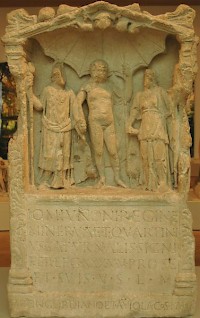
The temples on the central square could be dedicated to every god venerated by the Romans - and there were a quite a few of them. If the city had the status of colonia, it was considered to be a miniature-Rome and the town was the proud owner of a Capitolium, a copy of the great temple of Jupiter Best and Biggest in Rome, where the Capitoline triad (Jupiter, Juno, Minerva) was venerated. In Germania Inferior, the Capitolium of Cologne has been discovered beneath the present church St. Maria im Kapitol. Cologne also boasted of shrines dedicated to Mars, the god of fertility and war, and to the light god Mithras. Near the river port must have been a sanctuary of the river god Rhenus (=Rhine) and Portunus, the god of river trade and ports. As capital of a province, Cologne also had a temple dedicated to the emperor.
Cologne was a colonia. Therefore, the temples were dedicated to gods with Roman names. Other towns were proud of the temples of local gods (although the distinction between local and Roman gods is not clear-cut, as we will see below).
Local temples were square buildings surrounded by a low lean-to. (From the second century on, they were erected on platforms.) Temples of this type are known from several places (e.g., Nijmegen, Cuijk, Empel, Tongeren). One of the best-known examples is the large sanctuary excavated at Elst. It was made of natural stone and measured 23 x 30 meters and must have had a height of 17 meters - comparable to a modern building of four storeys. The temples of a typical Italian town like Pompeii were smaller and were erected from bricks, which suggests that Elst was a very important place indeed.
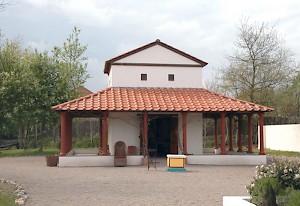
In the ancient world, large buildings were often presented to a town by a rich man, who gained prestige and political influence in return. However, the temple of Elst, which can dendrochronologically be dated after 96, was far too expensive for an individual, and it is very tempting to assume that the Roman government has sponsored a Batavian chief.
However this may be, it is certain that the god of Elst was identified by the Romans with one of their own gods, because near the sanctuary, the remains of a traditional Italian sacrifice were found, a suovetaurilia. The only deities who received this triple offering of pig, sheep and bull were Mars and Mater Matuta (the male and female deities of fertility). We do not know the name of the Batavian god or goddess who was venerated at Elst, but it is possible that the Romans identified him with their Hercules.